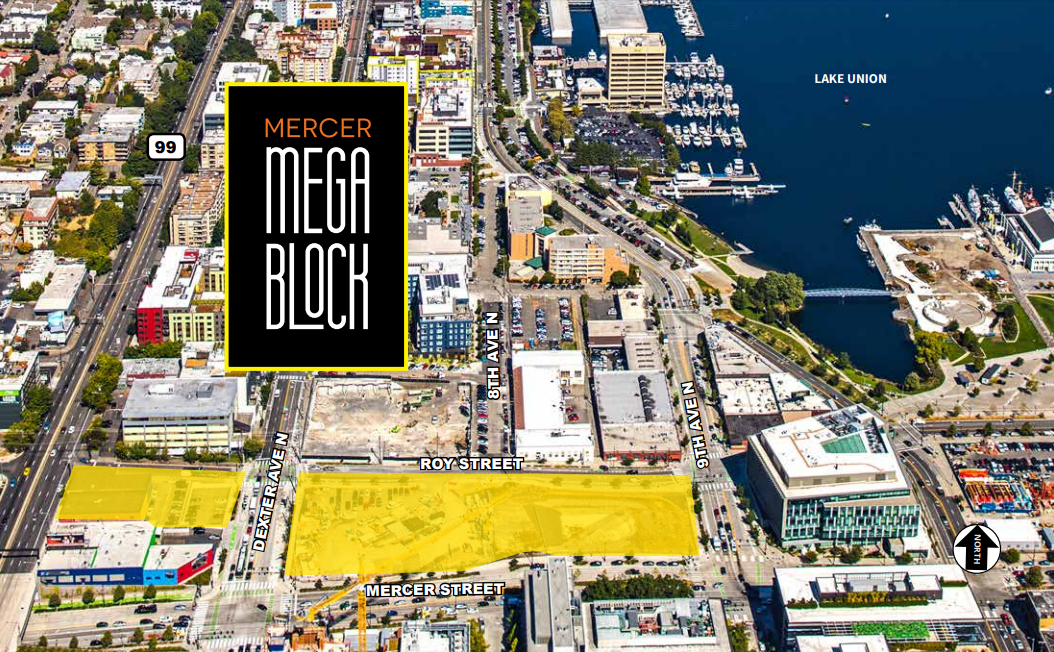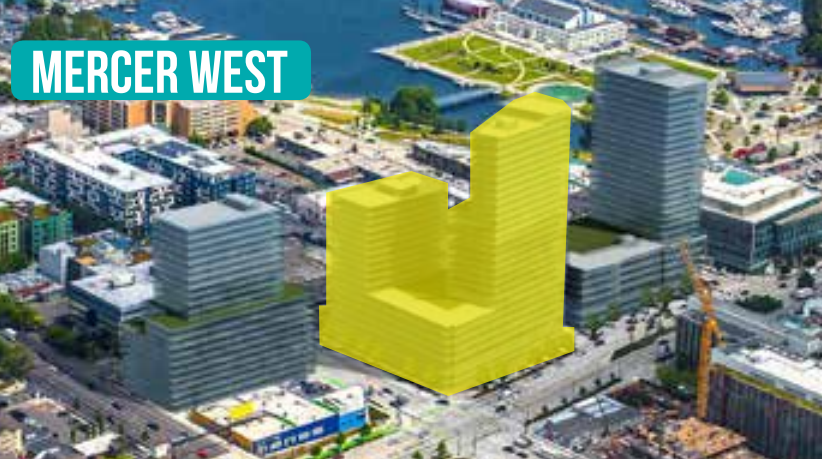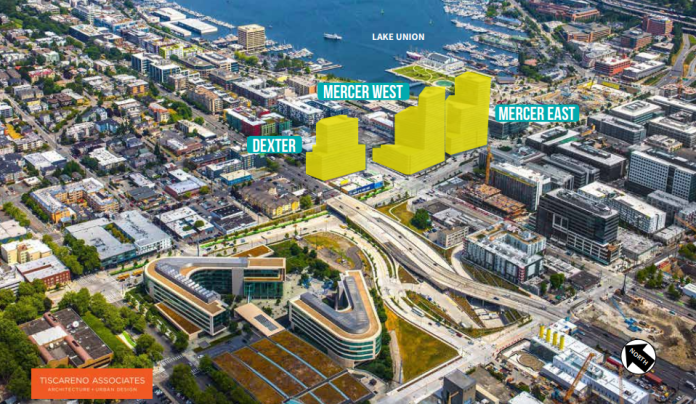While housing advocates have been calling for social housing on the City-owned Mercer Mega Block site and other publicly-held land, the Durkan administration is planning to auction the choice parcel off to highest bidder. In fact, the City’s Request for Proposals (RFP) brags about just how juicy this South Lake Union real estate opportunity is and how royally Seattle has messed up its housing market.
Erica C. Barnett released the RFP in The C is For Crank yesterday and noted that the City of Seattle, via its real estate broker JLL, was touting the city’s skyrocketing home prices and increasingly dysfunctional housing market as an asset.
Obviously, when you put artificial constraints on housing supply (such as zoning laws that make multifamily housing illegal in most parts of a city), housing prices increase. Usually, we think of that as a bad thing, because it means that all but the wealthiest renters (and those who can afford to buy $800,000 houses) get priced out of neighborhoods near employment centers, transit, and other amenities. But the city’s marketing materials turn this idea on its head: Restrictive zoning, “high barriers” to homeownership, and spiraling rents make Seattle the perfect place to buy one of the city’s last large parcels of public land…
Perhaps the Durkan housing affordability solution is to join the feeding frenzy so long as Seattle is turning into an enclave for the megawealthy–Seattle’s median household income recently surpassed $121,000. The City may lack a cohesive strategy to prevent displacement and ensure mixed-income neighborhoods throughout the city, but it could be poised to cater to the rich with the best of them.
One person in particular the RFP did not impress was Mike Eliason, who contributes with The Urbanist and co-wrote with Cary Moon the op-ed in Crosscut urging a higher use of the three acre Mercer Mega Block site. In a series of tweets, Eliason argued that the City’s affordability and sustainability stipulations were rather weak.
At 2.86 acres, the Mercer Mega Block is likely the largest undeveloped parcels left in South Lake Union, and could host towers as high as 27 stories due to zoning (and being in the flight path of Lake Union’s seaplane airport.)
Even the Mercer Mess is spun as a positive in the RFP: “This is a rare opportunity to control a significant development site in one of the strongest markets in the country. The property, located prominently on Mercer Street, receives high visibility from the more than 80,000 cars that use the primary thoroughfare daily.”

The RFP presents three scenarios for a developer to consider:
- All residential — about 1,200,000 chargable square feet and 1386 homes.
- All commercial — just under 1,000,000 chargable square feet of office space.
- Mixed-use development — 1,228,000 chargable square feet and 586 homes.
The size is different in each scenario because zoning standards are different between commercial and residential development. Offices tend to have higher ceilings than homes, which means less floor space per tower.

Criticisms aside, there some things to like about the RFP.
- Ground lease option leaves the door open to public ownership returning to the site.
- Pedestrian easement on 8th Avenue N to ensure connectivity.
- As many as 1,358 homes could be netted in the all residential option, the RFP says.
- Two-way protected bike lane extension on Mercer Street. The proposal requires the developer will the gap in the Mercer protected bike lane between Dexter and Ninth Avenue.
- Labor harmony agreements required for hotels on the site, ensuring the labor rights of hotel workers.
- City will pocket one-time moneyand bear less risk and bids could be quite high.
Of course there’s still the drawbacks
- No housing is guaranteed and the all office option would net the least Mandatory Housing Affordability (MHA) payments.
- Affordable housing may not be on-site since MHA performance is not required. That means low-income housing could be at a less desirable location.
- LEED Gold is not a world-class level of deep green sustainability performance.
- No mention of a parking cap. In fact are required to “describe how parking will be integrated into the development.” Yet more giant parking garages in South Lake Union will continue to feed Mercer Mess congestion.
- No plan on how to spend the money from the sale. The one-time money infusion may encourage the Mayor and Council to kick long-term revenue issues down the road and disguise shortfalls in the interim, leading to an even bigger problem later on.
Like or not, the RFP process is in motion. Proposals are due October 5th.
What Is A Housing Emergency Really?
Doug Trumm is publisher of The Urbanist. An Urbanist writer since 2015, he dreams of pedestrian streets, bus lanes, and a mass-timber building spree to end our housing crisis. He graduated from the Evans School of Public Policy and Governance at the University of Washington in 2019. He lives in Seattle's Fremont neighborhood and loves to explore the city by foot and by bike.


